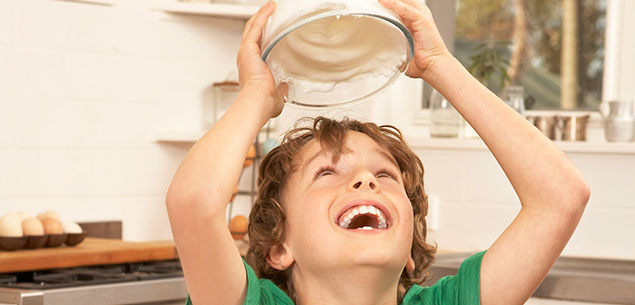If your child is a fussy eater, mealtimes can leave you wanting to pull your hair out with frustration. Often it is a matter of picking your battles, deciding which foods they can skip and which ones they really have to eat.
Here are some foods that are worth the fight.
Wholegrain breads
They may turn up their noses at the “bits”, but it is worth persevering because grainy breads are so much healthier than white bread, which has been stripped of most of its nutrients. Wholegrain breads are a source of essential fatty acids, vitamin E, magnesium and zinc.
Try: If they are reluctant, make sandwiches with one slice of grainy bread and one slice of white, so at least they are getting some nutrients.
Cheese
Dairy products deliver essential calcium and help to build strong bones. Cheese is great for snacks as well as a part of main meals, and there are so many different types. If your child won’t eat one particular sort, you can shop around until you find one they do like.
Try: Sneak grated cheese into dishes such as scrambled eggs or an omelette, or sprinkle it on a sandwich and hope they don’t notice!
Broccoli/cauliflower
Along with Brussels sprouts and cabbage, broccoli and cauliflower belong to a group of plants called cruciferous vegetables, which are packed full of important nutrients. They’re good sources of vitamin C and compounds known to fight cancer. Broccoli is a good source of folic acid, iron and calcium, while cauliflower contains potassium.
Try: Serving them raw – kids often prefer the crunchiness. Otherwise, sprinkle with grated cheese or cover in a cheese sauce.
Yoghurt
Another great source of calcium, yoghurt also provides good bacteria known as probiotics that help with digestion. Steer clear of sugary versions specifically aimed at kids because they are often lower in protein and good bacteria. Choose plain non-fat or low-fat yoghurt, or Greek yoghurt.
Try: Add chopped fruit and honey to improve the taste. Berries, stewed apples or peaches can make a big difference to the taste.
Salmon
This is a great food for kids because as well as being a source of high-quality protein, it contains vital omega3 fatty acids. It also provides vitamin B12, niacin and vitamin D. Tinned salmon is a cheaper alternative – buy the type that comes in spring water rather than oil and make sure you mash up all the bones, which are a good source of calcium.
Try: Mix with mashed potato and an egg, coat in breadcrumbs and shallow fry or grill to make fish cakes.
Sneaky disguises:
To get your kids to eat vegetables, try either serving them raw with a dip, such as salsa or hummus, adding them to a stir-fry or boiling, mashing together and cooking as a patty.




